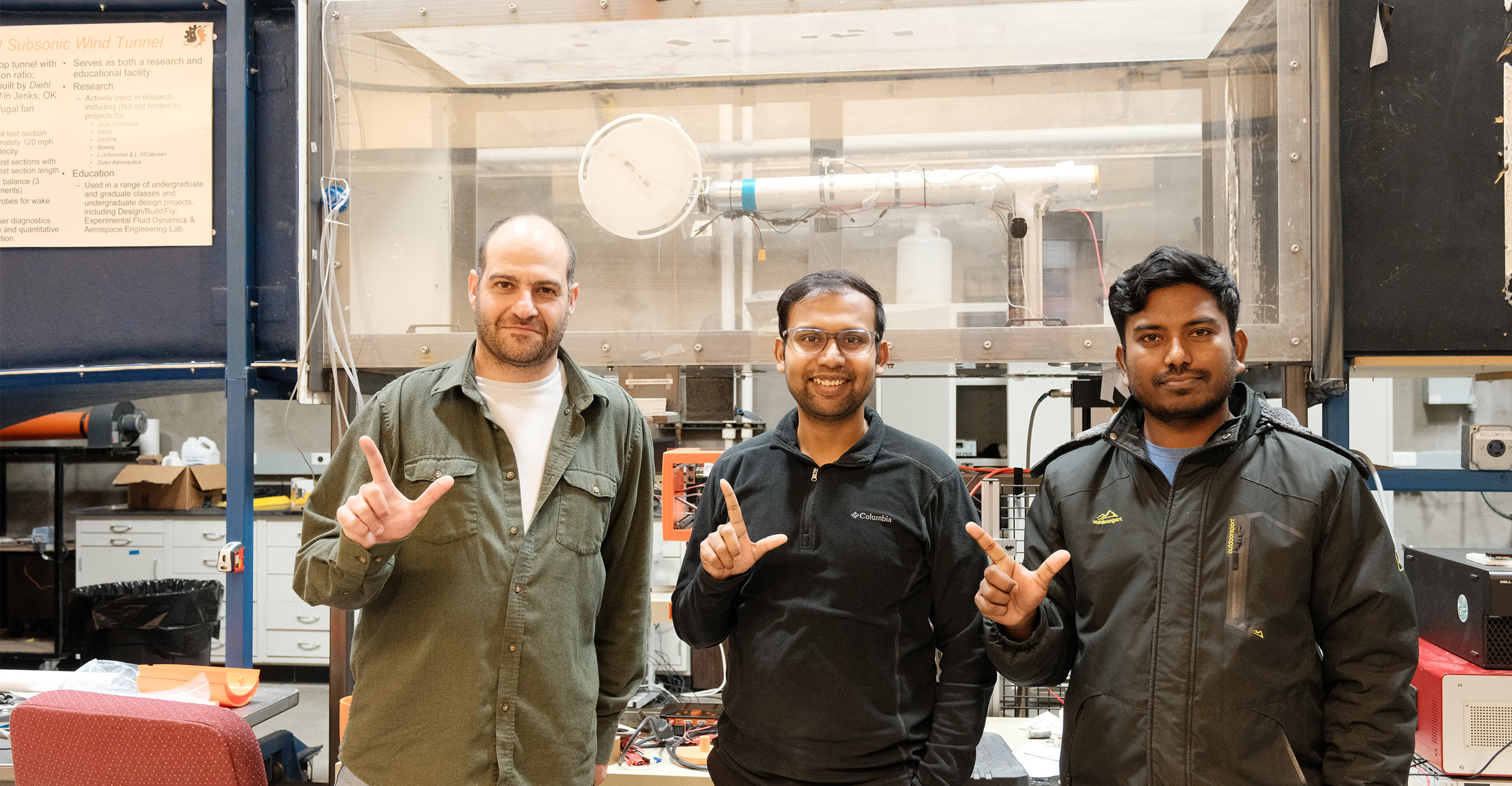
OSU team wins emergency eVTOL aircraft design competition
Wednesday, March 26, 2025
Media Contact: Desa James | Communications Coordinator | 405-744-2669 | desa.james@okstate.edu
A team of innovative students from the College of Engineering, Architecture and Technology at Oklahoma State University has won the GoAero Stage 1 of the U.S. University Innovation Award for their work in creating an emergency aircraft prototype. The competition, organized by NASA and GoAero, challenged university teams to design and develop autonomous electric vertical takeoff and landing (eVTOL) aircraft for emergencies.
The OSU team, led by assistant professor of mechanical and aerospace engineering Dr. Atanu Halder, collaborating with students from Texas A&M University, stood out with their well-researched and scientifically driven design approach. Their aircraft holds three key features: a compact design that can be stored and transported inside a 53-foot dry van trailer, high aerodynamic efficiency optimized for both takeoff/landing and cruise flight, and a range of approximately 75 miles with an endurance of around 71 minutes for an all-electric aircraft.

The team's success is attributed to its extensive experience in aircraft design and its use of advanced modeling tools developed from prior research efforts. Its design ensures efficiency, agility and compactness, making it an optimal solution for GoAero missions and various emergency applications.
The autonomous eVTOL aircraft designed by the team are expected to be utilized for a range of emergencies, including (1) search and rescue operations — assisting during natural disasters such as wildfires and floods, (2) emergency evacuations — transporting individuals from hazardous areas (3) medical emergencies — providing rapid response for critical healthcare needs (4) disaster response — supporting efforts to combat natural disasters.
Participating in the competition provided students with exposure to the entire aircraft design process. Each team member was responsible for unique components, and during the process, they all met together to ensure proper integration of the components. Therefore, they learned how to design specific components and how the design choices could affect the aircraft's overall performance.
“I think this multi-disciplinary experience is really valuable,” Halder said. “Additionally, collaborating in a large team on a complex problem enhances their teamwork, accountability and communication skills, preparing them for future careers in aerospace and engineering.”
The team comprised of Pedram Dabaghian, Ripon Sarker and Halder was dedicated to this intensive project. One moment Halder notes as highlighting this stressful, yet unforgettable experience is when, “We were working very late during the final submission when we discovered that one of the students needed to accept an official invitation for the team to proceed with submission. The student had already left the online meeting, and when we called him, we found he had fallen asleep - we had to wake him up so he could accept the invitation.”
The team's achievement in this competition helps establish the university as a leader in aviation innovation. It demonstrates OSU's expertise in aerospace design, engineering excellence, and collaborative problem-solving. Furthermore, it provides students with practical experience and prepares them for successful careers.
